Signaling pathways
1/44
There's no tags or description
Looks like no tags are added yet.
Name | Mastery | Learn | Test | Matching | Spaced |
|---|
No study sessions yet.
45 Terms
cell communication
- survive
- grow & divide
- differentiate
- die
Model of signaling pathway
1) extracellular signal molecule binds to receptor protein on plasma membrane of target gell
2) activates intracellular signaling proteins
3) signal effector proteins which can alter metabolism, alter gene expression, alter cell shape or movement
Distances signals operate on
- contact dependent
- paracrine
- synaptic
- endocrine
contact dependent signaling
-require interaction between membrane molecules on two cells
paracrine signaling
Type of cell signalling where cells communicate over short distances by using local regulators that target cells in the vicinity of the emitting cell.
synaptic signalling
Involved in neuron synapses. Neurons form specialised junctions with target cells, called synapses. Neurons secrete neurotransmitters that diffuse short distances and bind to receptors on the target cells
endocrine signaling
Specialized cells release hormone molecules into vessels of the circulatory system, by which they travel to target cells in other parts of the body.
specificity
signal molecule fits binding site on its complementary receptor; other signals don't fit
Amplification
when enzymes activate enzymes the number of affected molecules increases geometrically in an enzyme cascade
integration of signal
- when a combination of receptors binding ligands work together
extracellular signaling molecules
- usually expressed and degraded very fast
- switched on, has a certain life time, and then off
Acetylcholine
- example of the same ligand but when bonded to different tissue, has different outcomes
- heart muscle cell: decreases rate and force of contraction
- skeletal muscle cell: produces contraction
- salivary gland cell: secretion of enzymes
molecular switches
Intracellular signaling proteins where receipt of a signal causes them to toggle from an inactive to an active state. Once activated, these proteins can stimulate—or in other cases suppress—other proteins in the signaling pathway. They then persist in an active state until some other process switches them off again.
signaling by phosphorylation
-protein kinase activates target protein by taking off Phosphate from ATP and putting it on
- protein phosphatase turns target protein off by taking off the phosphate

signaling by GTP-binding
-in off state when GDP is bound to target protein
- GTP binding turns target protein on (kind of on a timer)
- Hydrolysis of GTP takes off a phosphate and turns it back off
G protein-coupled receptors
- each one is closely associated with a guanosine nucleotide-binding protein (G protein)
- ligand usually nestles amongst the helixes to cause the conformational change
- heterotrimers- alpha, beta, gamma subuits- modified with a fatty acid so they can stick into the membrane
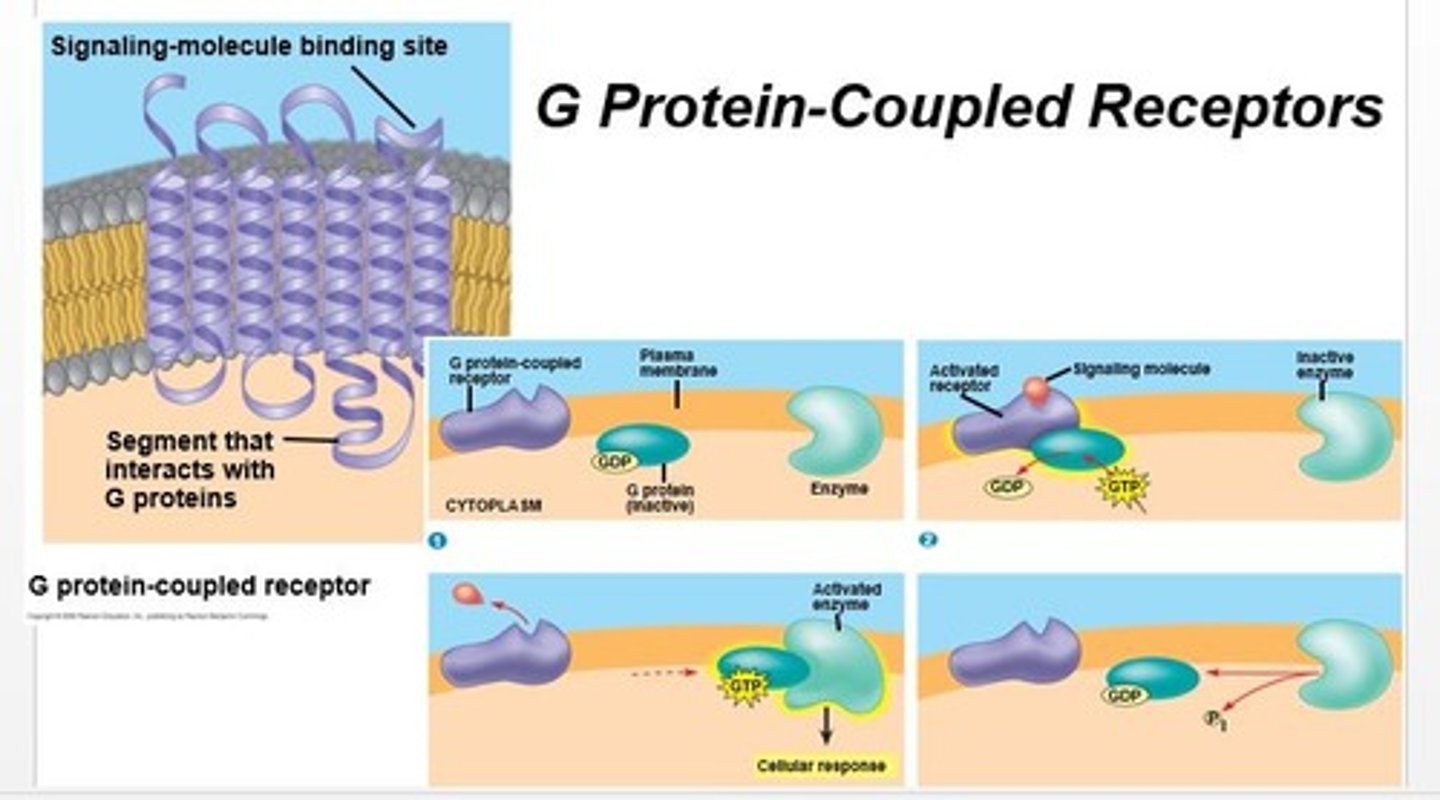
GPCRs
- a 7 transmembrane domain containing protein
-more than 700 GPCRs in human (150 have no known ligand)
- senses of sight, smell and taste depend on them
- the signal molecules are very varied in shape and structure
- about half of all known drugs work on GPCRs or their pathways
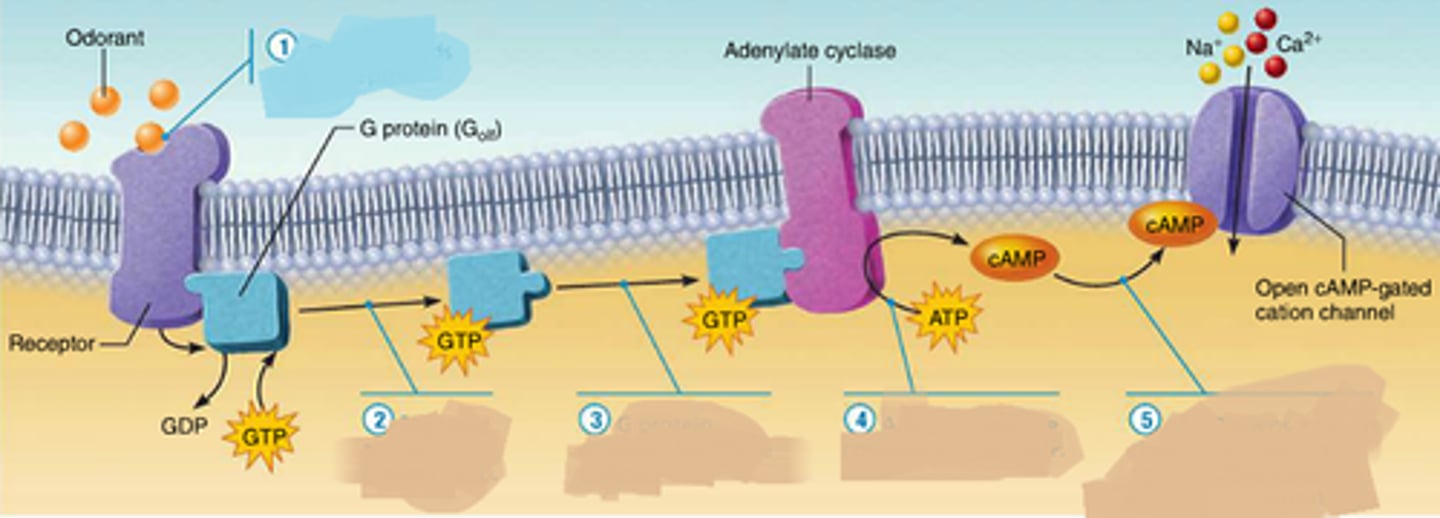
G-protein-coupled receptor pathway
-signal molecule binds to the transmembrane recptor- conformationchange
- recptor binds to the alpha protein, that binds to beta and gamma
- can then bind GDP and GTP
- can interact with the downstream enzyme and increase it's activity
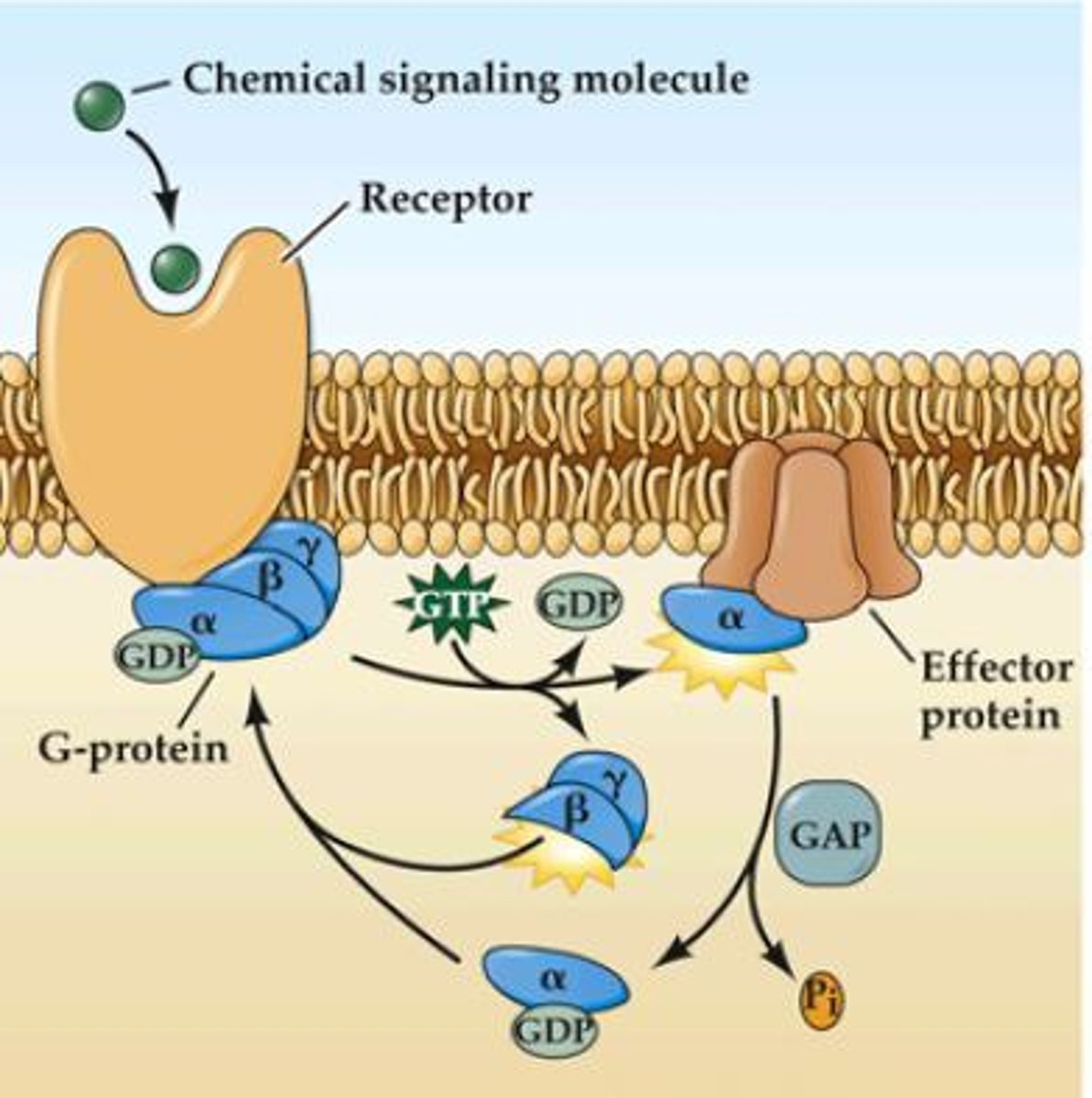
ß-adrenegic receptor
1) epinephrine binds to its specific receptor
2) Hormone-receptor complex causes GDP bound to G-alpha to be replaced by GTP activating G-alpha
3) activated G-alpha separates from G-beta-gamma, moves to adenylyl cyclase, and activates it (many G-alpha subunits may be activated by one occupied receptor
4) adenylyl cyclase catalyses the formation of cAMP
5) cAMP activates PKA
6) Phophorylation of cellular proteins by PKA causes the cellular response to epinephrine
7) cAMP is degraded, reversing the activation of PKA
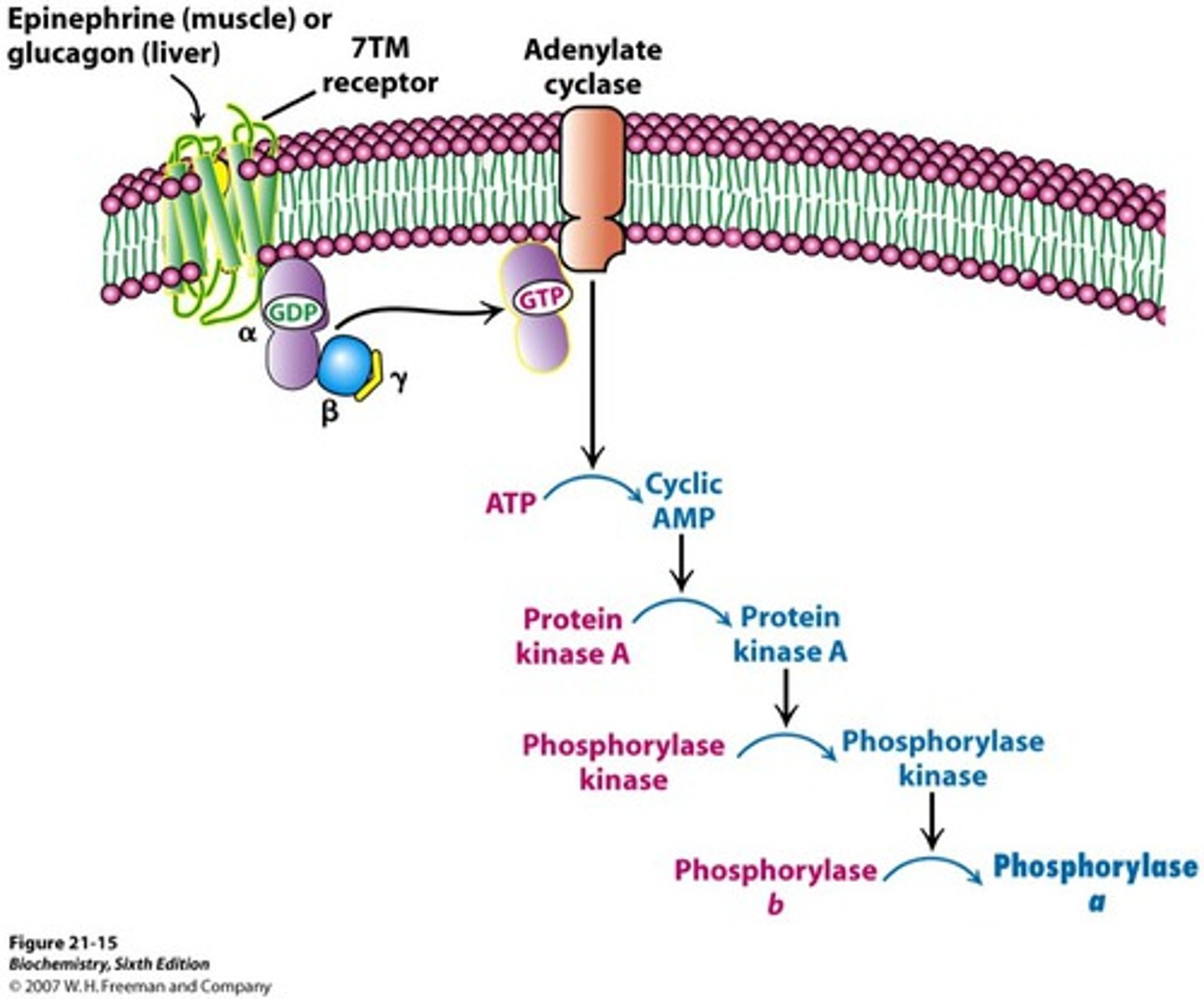
Enzyme-Coupled cell-surface receptors
- ex: Receptor tyrosine kinases
-recognize the extracellular signal molecules that control their growth and development; these receptors often act by relieving the transcriptional repression of specific genes.
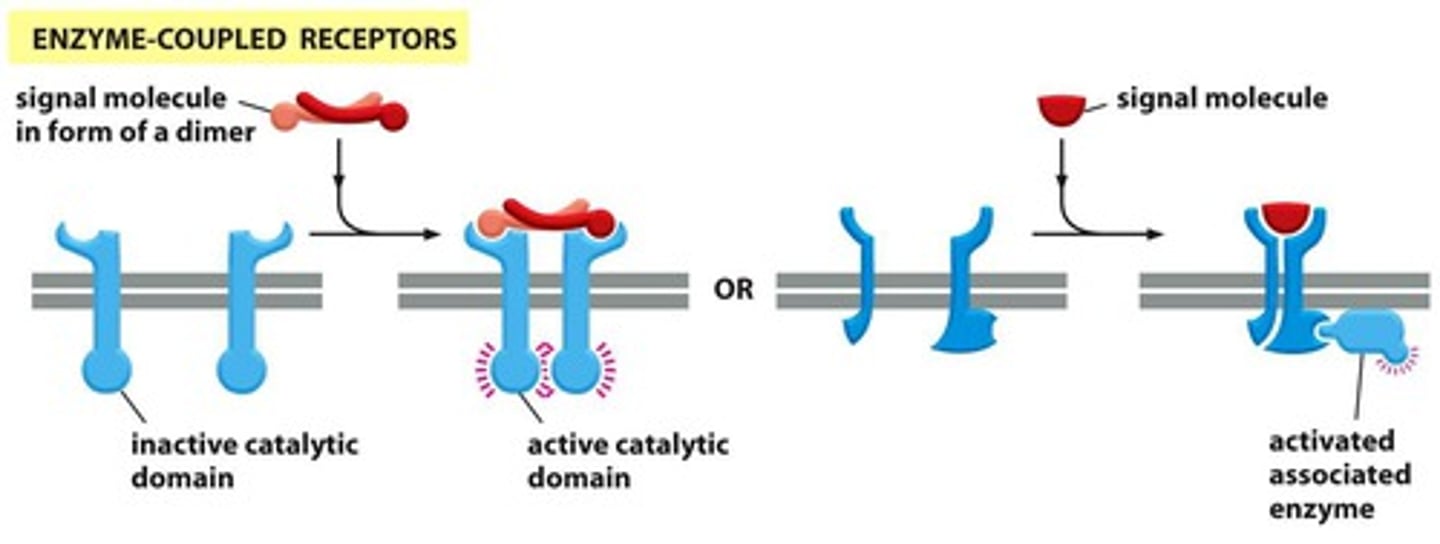
tyrosine kinase domain
- dimer attached to the membrane
- interacts with a ligand which is also usually a dimer
- binds and then the receptors will phosphorylate each other- transphosphorylation
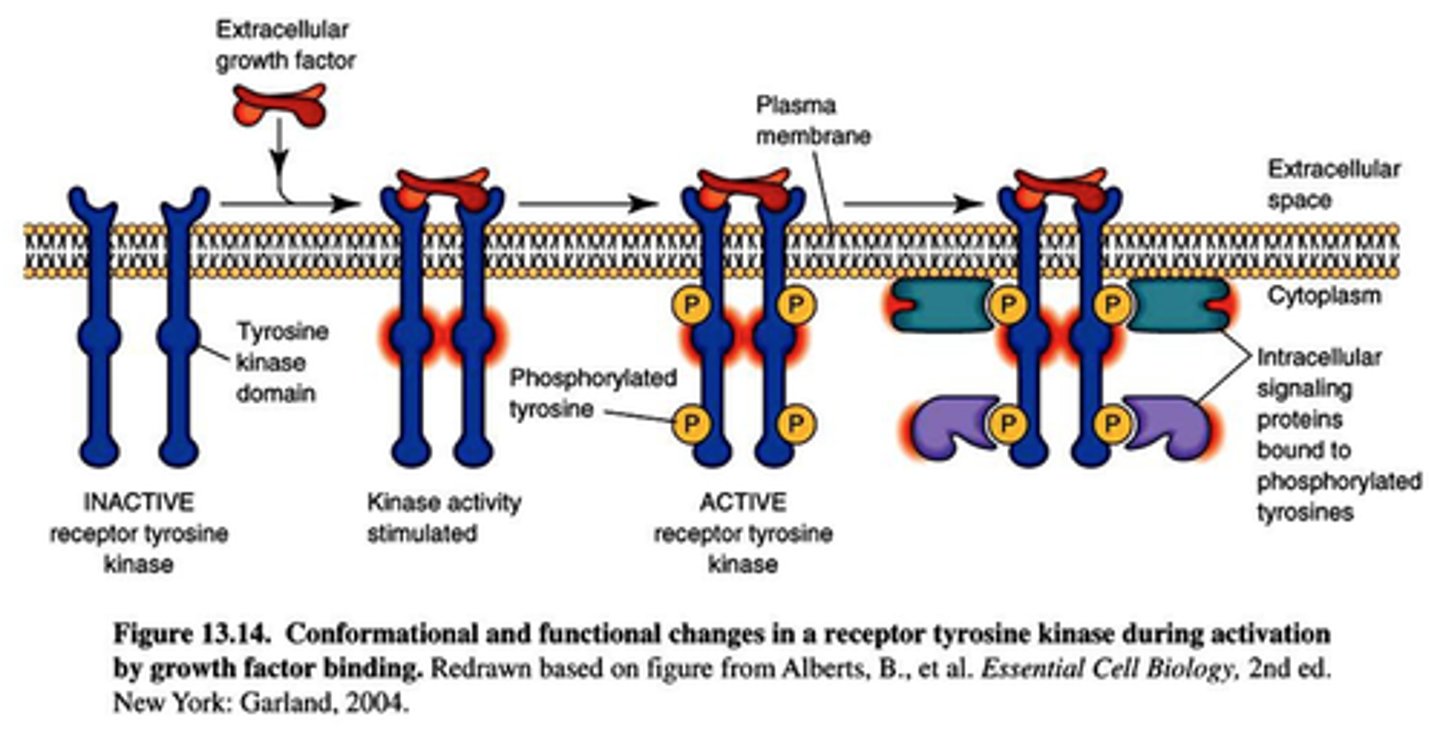
Insulin receptor tyrosine kinase
- insulin binds the insuline receptor and changes the conformation then that binds to the kinase domains
-kinase domains phosphorylate each other
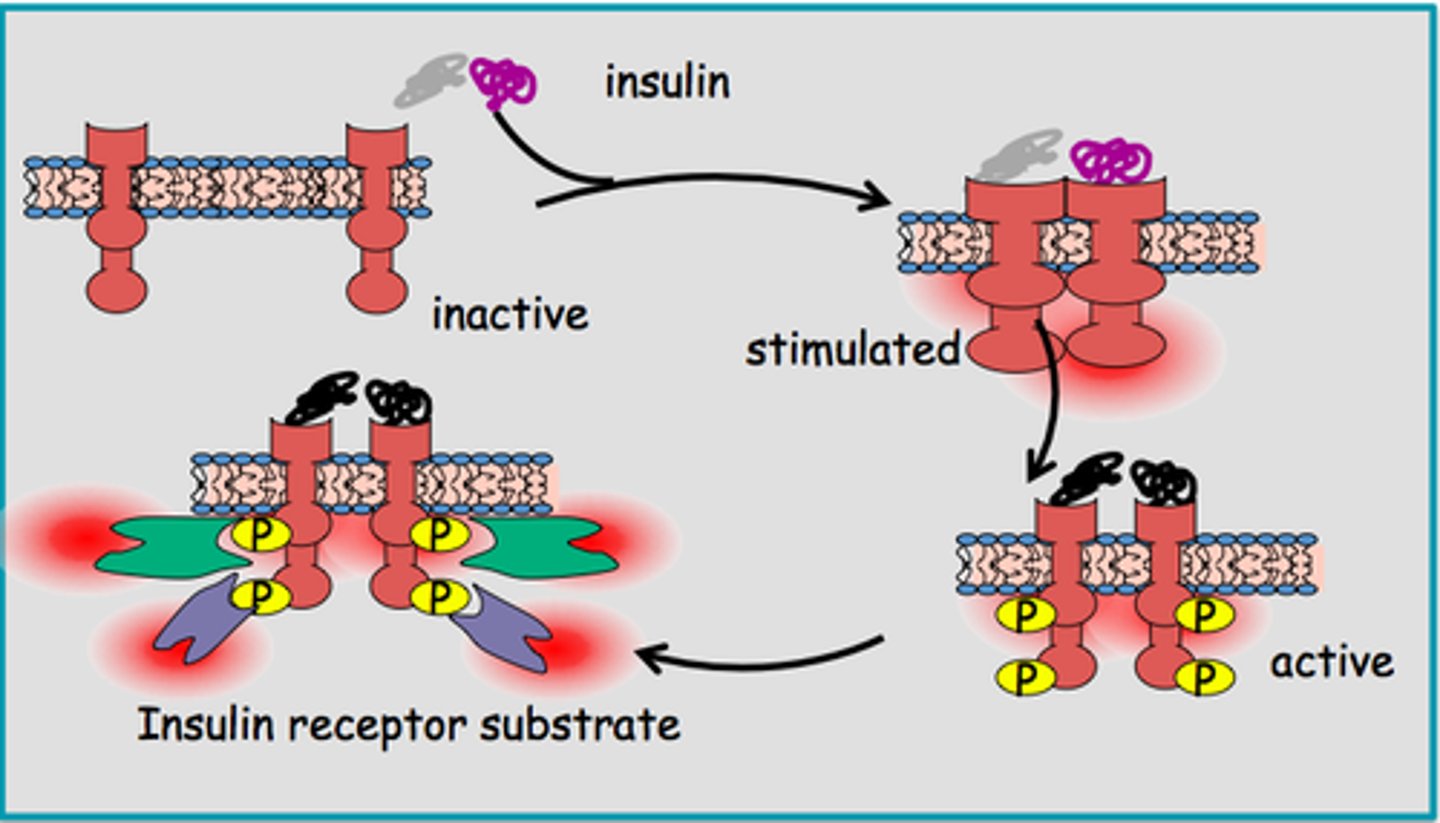
pseudo substrate inhibition activation loop
- loop inhibits enzyme by it's own tyrosine, so can't be phosphorylated
- loop eventually folds out, gets phophorylated by another molecule in the dimer and now can't go back into the site because it is phosphorylated (it is active)
- pseudo substrate inhibition relieved
- real substrate can get in there
mixture of cellular signaling
- sometimes a process can take multiple steps of cellular signaling complexes (phosphorylation, insulin, g protein, etc)
when signaling goes wrong
Normal EGF receptor:
- EGF- binging site empty; tyrosine kinase is inactive
- binding of EGF activates the tyrosine kinase
Messed up receptor
- tyrosine kinase is constantly active because missing a few things
Why would a cell send a signal to another cell?
How far are signals sent?
What are the major components of a signalling pathway?
What provides signalling pathways with their specificity? What can amplify a signal?
Are signals usually transient or long-lived? How is this achieved?
What does it mean that something is a molecular switch? What is on and what is off in each of the two generalised molecular switches shown?
What are the components of the G protein-coupled receptor pathway?
How does a G protein-coupled receptor transmit the activation signal? How does it act as a molecular switch?
What does the βadrenergic receptor respond to, and what does it pass its signal to?
What common intracellular pathways are involved? How is the signal amplified?
What is a receptor tyrosine kinase? Give one example.
What is their immediate phosphorylation target?
What common intracellular signalling pathways are downstream of the insulin receptor?
Explain the purposes of cell communication
Explain the different distances across which cell signals may be sent
Describe some general characteristics of cell signalling pathways
Define and explain the characteristics of a molecular switch
Explain the components of a G protein-coupled receptor signalling pathway, including how the members interact and how the intracellular signal is transmitted
Define a Receptor tyrosine kinase
Explain signalling through the insulin receptor, through its intracellular signals